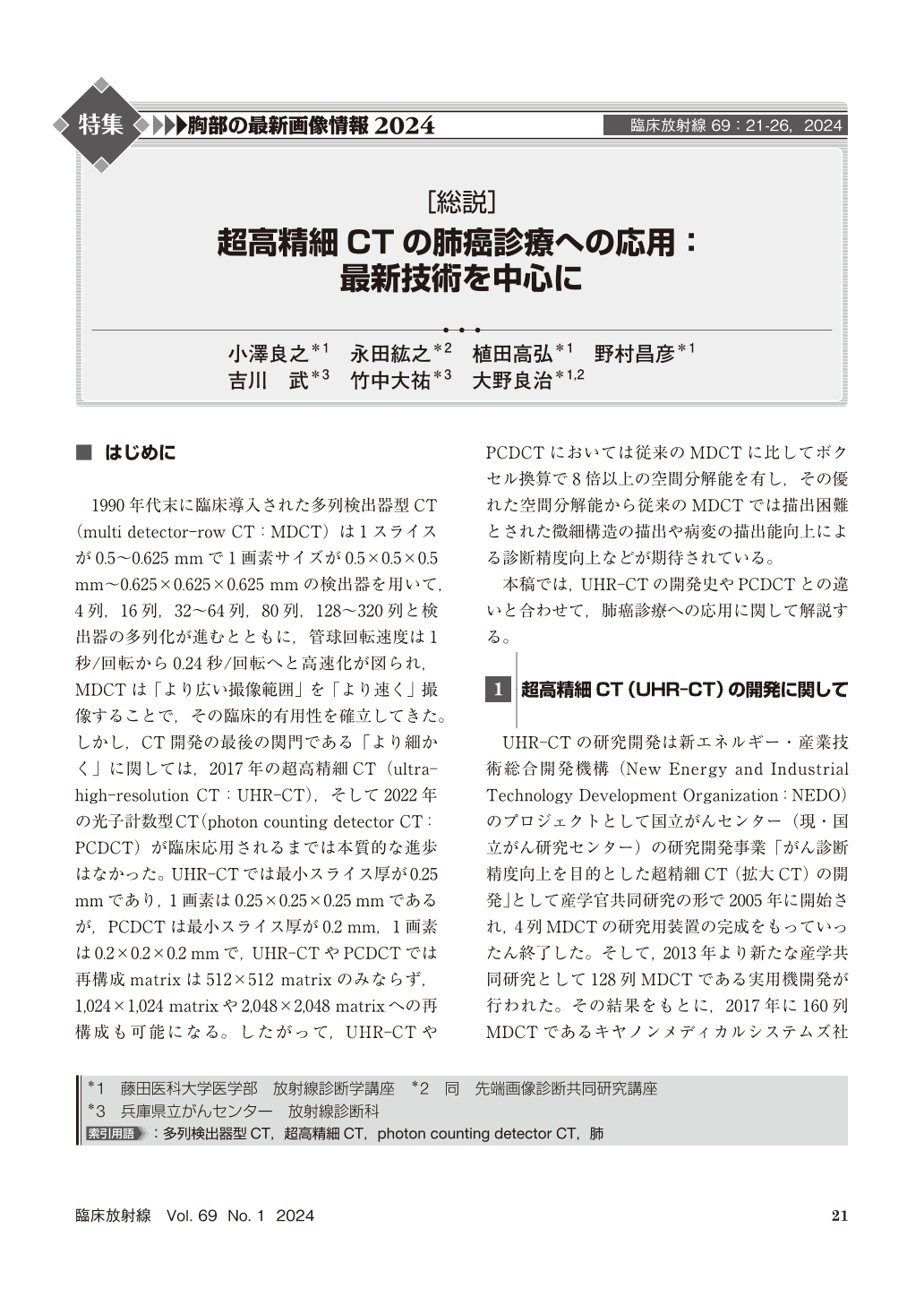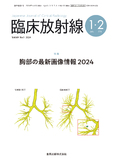Japanese
English
- 有料閲覧
- Abstract 文献概要
- 1ページ目 Look Inside
- 参考文献 Reference
1990年代末に臨床導入された多列検出器型CT(multi detector-row CT:MDCT)は1スライスが0.5~0.625mmで1画素サイズが0.5×0.5×0.5mm~0.625×0.625×0.625mmの検出器を用いて,4列,16列,32~64列,80列,128~320列と検出器の多列化が進むとともに,管球回転速度は1秒/回転から0.24秒/回転へと高速化が図られ,MDCTは「より広い撮像範囲」を「より速く」撮像することで,その臨床的有用性を確立してきた。しかし,CT開発の最後の関門である「より細かく」に関しては,2017年の超高精細CT(ultra-high-resolution CT:UHR-CT),そして2022年の光子計数型CT(photon counting detector CT:PCDCT)が臨床応用されるまでは本質的な進歩はなかった。UHR-CTでは最小スライス厚が0.25mmであり,1画素は0.25×0.25×0.25mmであるが,PCDCTは最小スライス厚が0.2mm,1画素は0.2×0.2×0.2mmで,UHR-CTやPCDCTでは再構成matrixは512×512 matrixのみならず,1,024×1,024 matrixや2,048×2,048 matrixへの再構成も可能になる。したがって,UHR-CTやPCDCTにおいては従来のMDCTに比してボクセル換算で8倍以上の空間分解能を有し,その優れた空間分解能から従来のMDCTでは描出困難とされた微細構造の描出や病変の描出能向上による診断精度向上などが期待されている。
Since the late 1990s, multidetector-row CT has been tried to have wider scan coverage and faster gantry rotation and demonstrated clinical relevance in not only radiology, but also clinical medicine. However, thinner detector collimation and increasing spatial resolution on CT have been limited until the clinical set of ultra-high-resolution CT with energy integrated detector(EID)in 2017. Furthermore, photon counting detector CT(PCDCT)has been started to clinical set in Japan since 2022. Both systems make it possible to examine with thinner detector collimation ≦0.25×0.25×0.25 mm and reconstruct CT images as not only 512×512 matrix, but also 1,024×1,024 or 2,048×2,048 matrix. In this article, we demonstrate basics and clinical potential of UHR-CT for lung cancer as compared with PCDCT.

Copyright © 2024, KANEHARA SHUPPAN Co.LTD. All rights reserved.


